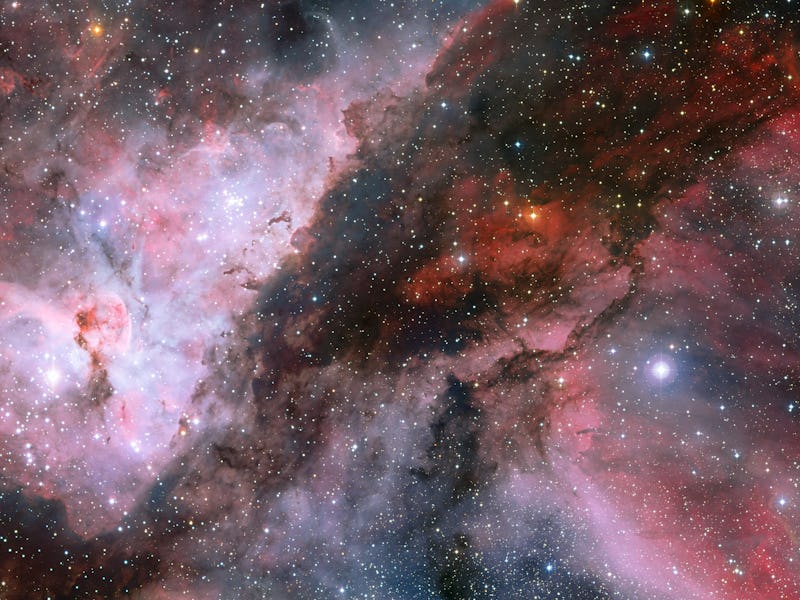Amazing New Images Capture Binary Star's Violent Stellar Storm
We've never seen Eta Carinae like this before.

Deep within the Carina Nebula lives the binary star system Eta Carinae — two massive stars orbiting each other, producing turbulent stellar winds that collide at speeds of 6 million miles per hour.
New images released by the European Space Observatory show for the first time, in surprising detail, the impact zone where winds ejected from each of the stars meet. They depict an incredibly explosive region where two of the largest stars in the galaxy are bludgeoning each other with powerful stellar material.
Eta Carinae is very much unlike the star system we know here on Earth. In addition to being made up of two stars, it is younger, more violent, and much bigger. The system’s total brightness is five million times that of our sun.
From 1837 to 1856, Eta Carinae produced the “Great Eruption” — a stellar explosion where the larger star in the system expelled a massive amount of gas and dust all at once. Before and after this event the system could not be seen from Earth with the naked eye, but for a few days in 1843, Eta Carinae was the second-brightest star in the night sky.
These images show the place of Eta Carinae and its Homunculus Nebula within the Carina Nebula, and the image of the point of stellar wind collision within.
The Great Eruption resulted in the creation of the Homunculus Nebula, an almost dumbbell-shaped cloud of stellar gas that envelops the binary star system. Before now, astronomers were unable to peer within the nebula and image the details within, including the comparatively tiny zone where the stellar winds mingle. This area is a thousand times smaller than the Homunculus Nebula overall.
The researchers achieved this feat using ESO’s Very Large Telescope Interferometer, and resolving the image using a combination of instruments and techniques. The result was the highest resolution image of the system ever produced, revealing an unexpected fan-shaped structure at the spot where the stellar winds collide. This is produced when the wind from the smaller, hotter star violently crashes with the denser material ejected from the larger star.
This work will help inform our understanding of how young, massive star systems shed material and grow smaller as they evolve over time.